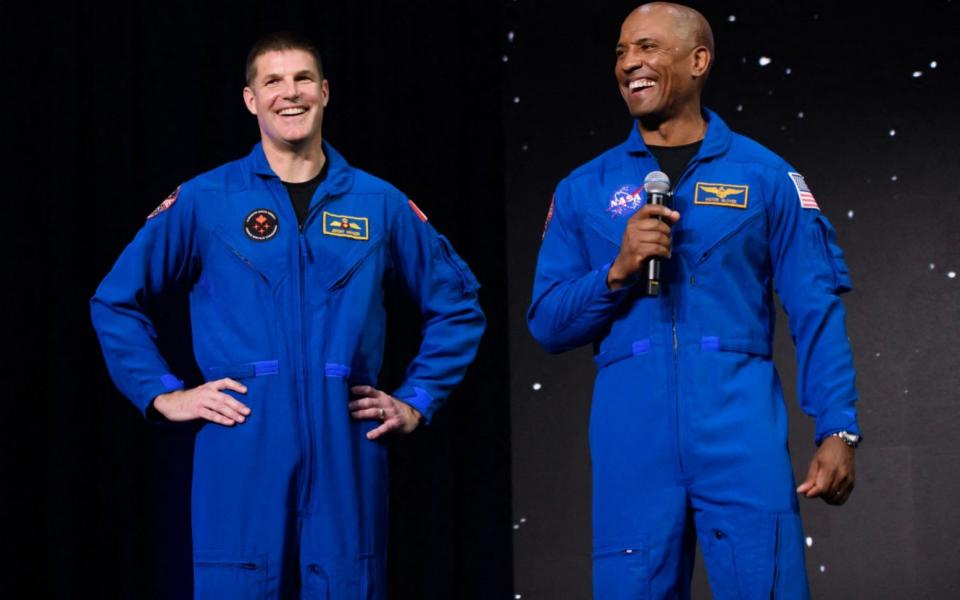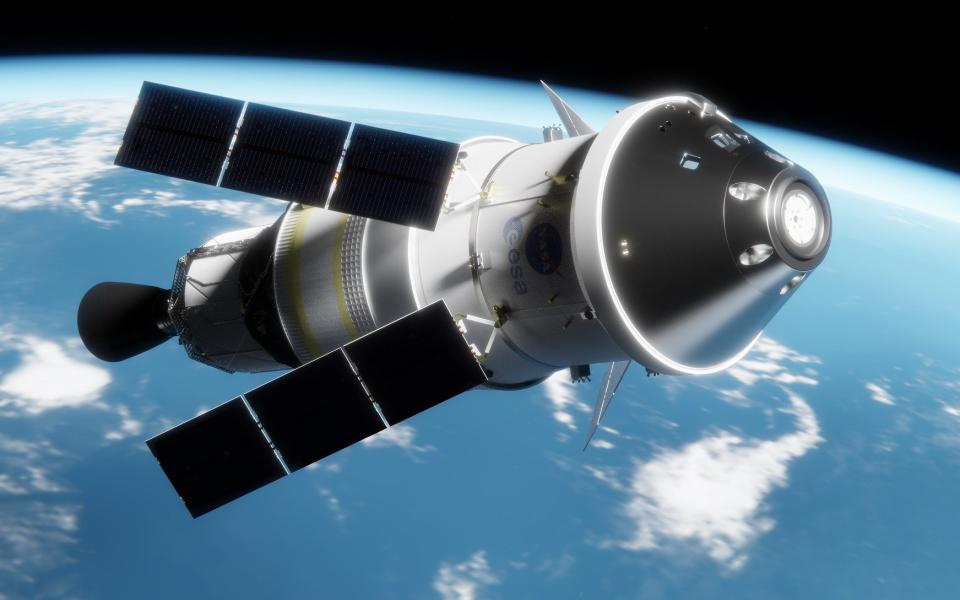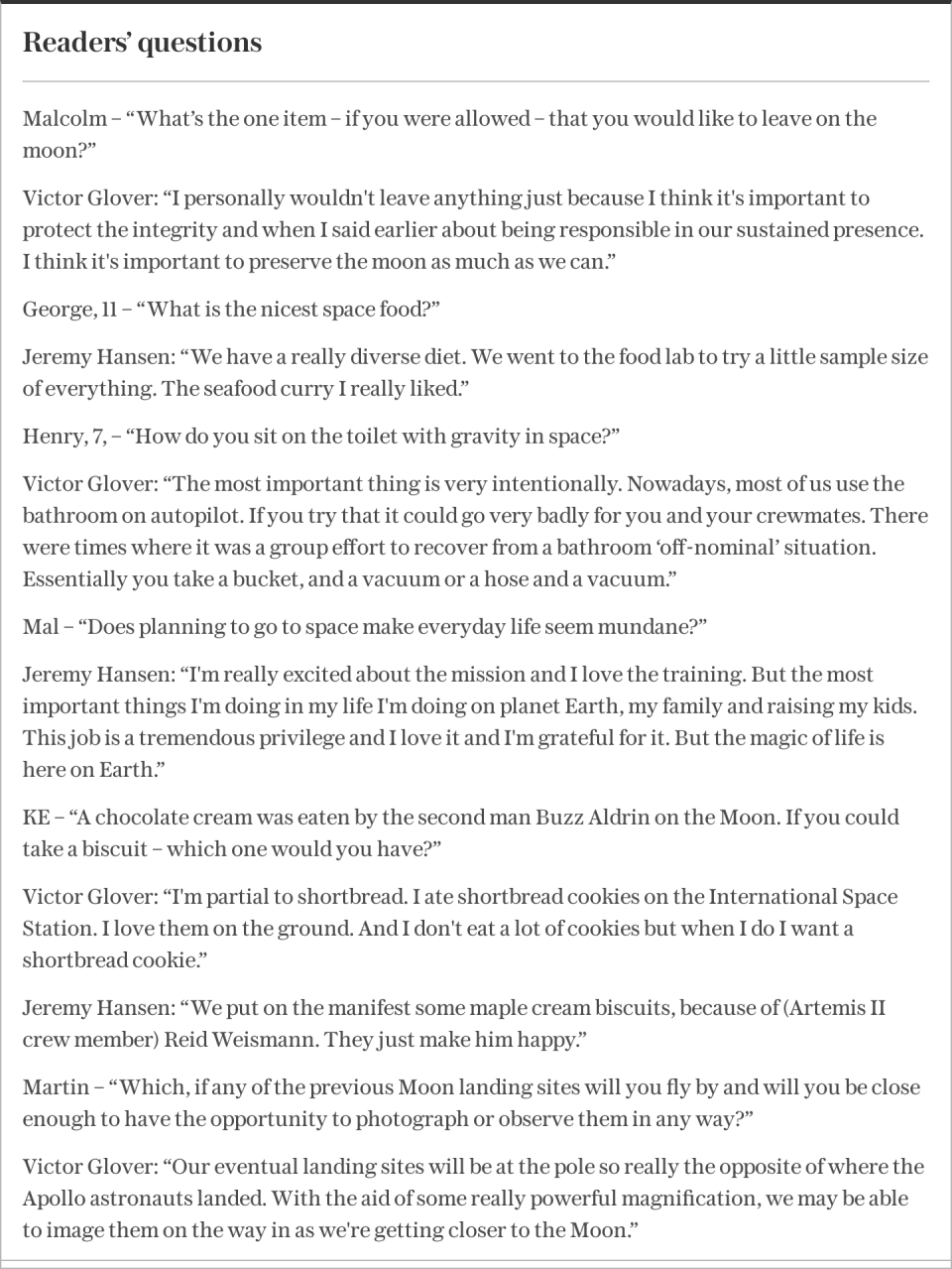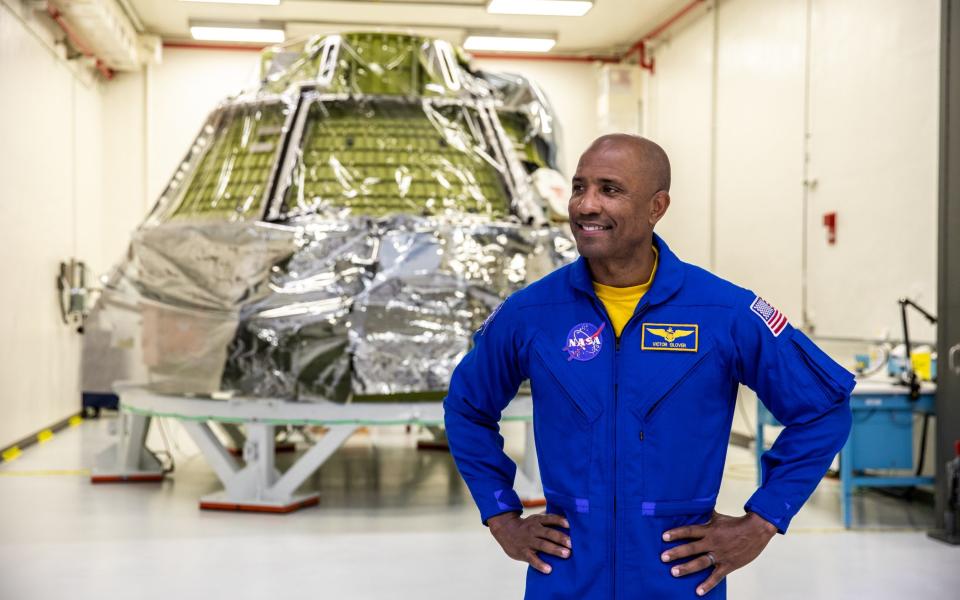Flying to the moon is a dream of most astronauts, but for the crew of the upcoming Artemis II mission, returning safely to Earth is their ultimate goal.
In an exclusive interview for Telegraph subscribers, Victor Glover and Jeremy Hansen of NASA’s Canadian Space Agency spoke of their fears for their families and concerns that the entire mission would be abandoned if something went wrong.
The pair have been chosen as pilots and mission specialists for the Artemis II mission, which will fly past the moon next year. If successful, a landing will follow in 2025 or 2026.
Hansen, 47, a former fighter pilot, astronaut trainer and married father of three, said: “I’ve thought about it, I know it’s scary. It’s a long way away.
“I don’t live in fear, but I absolutely recognize the fear that comes with something like this and we spend a lot of our week talking about the ways in which we might lose crew in space and how we’re going to mitigate them .
“And we know there are some that we will never think about and that’s the reality of it.
“It is very important for me to emphasize that during a mission like this we can lose a crew. It is not likely that we will mitigate all risks.
“I don’t think that’s very likely, but it is possible, and if we do, the most important thing is that we keep going.
“The only way society could fail us for that sacrifice would be if they didn’t follow through when they got an initial reaction of ‘we need to stop this.’ That would be devastating.”


Human spaceflight has a good safety record, but there have been notable exceptions. In 1986, the NASA space shuttle Challenger broke up 73 seconds after launch, killing all seven crew members.
In 2003, the Space Shuttle Columbia disintegrated as it reentered the atmosphere over Texas and Louisiana, killing all seven astronauts.
After the disaster, the space shuttle was grounded for two years, just like after Challenger, which meant that construction of the International Space Station was halted.
Three Apollo 1 astronauts were also killed in an electrical fire in the command module during a ground test of the spacecraft.
The only astronauts to die in space were the Russian crew of Soyuz 11, who were found dead by the recovery team after their crew capsule depressurized during reentry from the Salyut 1 space station.
Glover, 47, a former U.S. Navy test pilot and married father of four daughters, said he distinctly remembered watching the Challenger disaster at school in a television event that shocked the world.
When asked what part of the mission he was most looking forward to, Glover said it was a splashdown – the moment when the crew module returns to Earth.


“It’s risky and it’s important to be honest about that,” he said. “I don’t spend a lot of time feeling nervous or anxious about it. There’s one thing that makes me feel that way and that’s my family there watching the whole thing all the time. They hold their breath.
“And I know that they can’t really exhale and get comfortable until we’re safely back on Earth, and so that’s the part that gives me the most hesitation.
“People assume I’m being funny when I say I’m looking forward to landing, but it’s not because I’m in a hurry before the mission is over.
“If that doesn’t work, we won’t make future things possible. All these objectives come to a standstill until we figure out what went wrong.
“And so splashdown means one: our families can relax and exhale, but it also means that we are at least in the process of passing the baton of this relay.”


However, Glover said it was the Challenger disaster that inspired him to become an astronaut.
He added: “Becoming an astronaut wasn’t my goal as a child, but the Challenger tragedy really cemented its importance.
“I was in fourth grade and we lived briefly in Texas at the time and on the day of the tragedy they pulled us all into the auditorium and I remember being struck, and it was sad, but it was then the principal entered the auditorium entered the auditorium to make the announcement and turn on the news that I realized.
“It was my first deep thought as a child, that this is because they are national heroes, the idea of this is much bigger than just the tragic loss of life, and so that’s really what made me think about the importance of it. .”


A native of Pomona, California, Glover served as an aviator in the U.S. Navy and was a test pilot for the F/A-18 Hornet, Super Hornet and EA-18G Growler, with more than 3,000 hours in the air.
He was elected astronaut for NASA in 2013 and served on the International Space Station in 2021, completing four spacewalks and becoming the first African American to fly a long-term mission to the ISS.
He will be the first black astronaut to fly by the moon.
Born in London, Ontario, Hansen served as a CF-18 fighter pilot and was selected as an astronaut by the Canadian Space Agency in 2009, after which he went to work at the International Space Station’s Mission Control Center.
In 2013 he took part in the European Space Agency’s cave program, living underground for six days in Sardinia, and the following year he became an aquanaut and joined the Neemo19 program, living underwater for seven days for the coast of Florida.
Starting in 2017, Jeremy began training astronauts at NASA and this year he was assigned to the Artemis mission, where he will become the first Canadian to ever go to the moon.
Artemis II is scheduled to launch in November 2024, and in addition to Glover and Hansen, there will be two more NASA astronauts, Commander Reid Wiseman and payload specialist Christina Koch.
After launching on the Space Launch System (SLS) rocket – the largest to ever leave Earth – the Orion spacecraft will separate and travel to the moon and make a flight.
It will be the first manned mission beyond low Earth orbit since Apollo 17 in 1972.
Telegraph subscribers can watch Sarah’s full interview with Victor and Jeremy on Tuesday, December 19 at 6:30 p.m. To book, visit http://telegraph.co.uk/extra-events